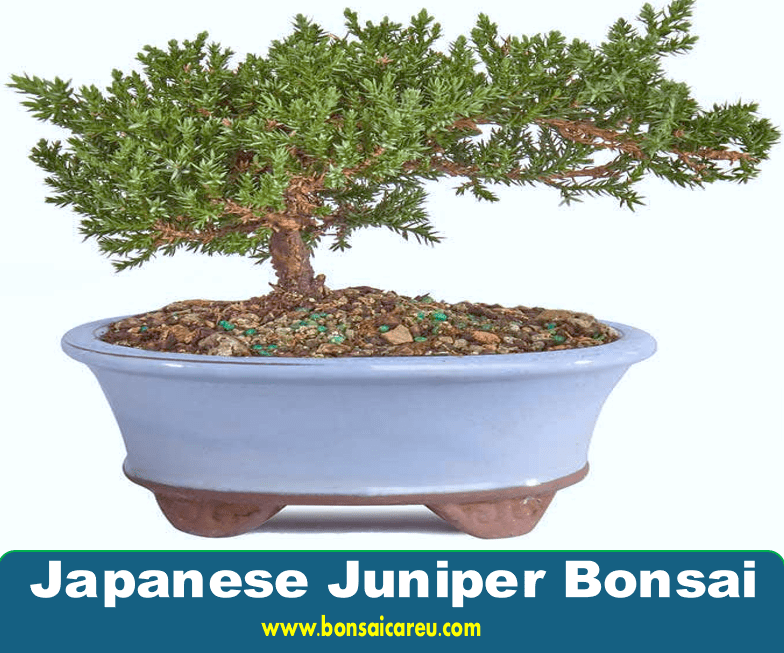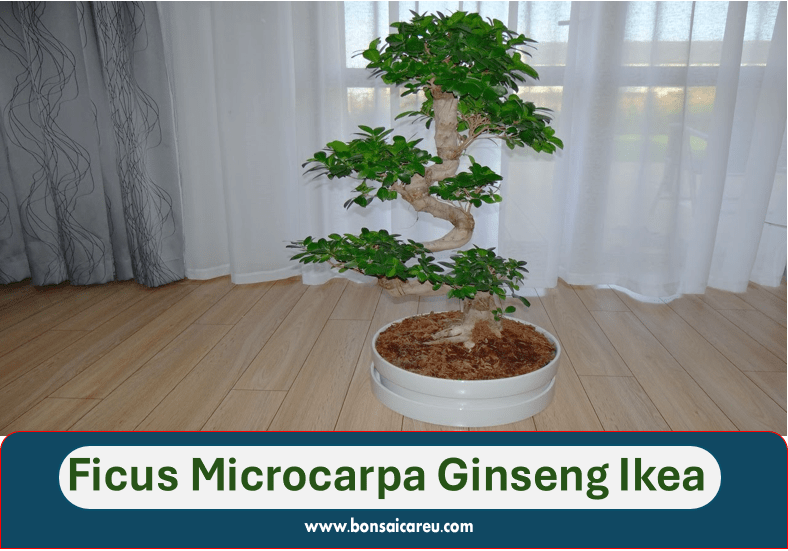Japanese Juniper Bonsai: Japanese Juniper Bonsai trees are popular for beginners due to their pruning and aging adaptability. In Austin, Texas, you can find a variety of Juniper Bonsai trees, such as Rock Juniper Bonsai and Japanese Juniper Bonsai, priced between $30 to $129.
They require bright, direct sunlight for at least 6-8 hours daily and must be kept slightly moist, especially during the growing season. The most common types of bonsai are the Chinese Juniper and the Japanese Shimpaku. These trees respond well to various gardening conditions, making them ideal for beginners looking to care for a bonsai tree easily.

Introduction To Japanese Juniper Bonsai
Japanese Juniper Bonsai, a popular choice for bonsai enthusiasts, is known for its elegant and timeless beauty. With its delicate foliage and distinctive bark, this bonsai variety adds a touch of tranquility to any space. Perfect for beginners, Japanese Juniper Bonsai is easy to care for and responds well to pruning and shaping techniques.
Origins And Species Popularity
Japanese Juniper Bonsai, originating from Japan, is highly popular for its unique beauty and symbolism.
It has gained popularity worldwide due to its elegant appearance and cultural significance.
Characteristics Unique To Japanese Juniper
Japanese Juniper Bonsai is known for its compact size, needle-like foliage, and twisted trunk.
Their unique characteristics make them a favorite choice for bonsai enthusiasts.
Ideal Growing Conditions
Japanese Juniper Bonsai, known for its striking beauty and symbolism in Japanese culture, requires specific growing conditions to thrive. Understanding the ideal environment for these bonsai trees is crucial for their health and longevity.
Sunlight Requirements
Juniper bonsai thrive in bright, direct sunlight, necessitating at least six to eight hours of full sun exposure daily. Due to this requirement, most species of juniper bonsai are best suited for outdoor growth throughout the year. Providing ample sunlight ensures the bonsai’s vigorous growth and vibrant foliage.
Temperature And Humidity Needs
Japanese Juniper Bonsai prefers a temperate climate with moderate humidity. They thrive in temperatures ranging from 60 to 70 degrees Fahrenheit and humidity levels between 50% and 75%. Consistent air circulation is essential to prevent stagnant moisture around the foliage, reducing the risk of fungal diseases.
Watering And Feeding
Proper watering and feeding are essential for the health and vitality of your Japanese Juniper Bonsai. Understanding the correct watering frequency and techniques and choosing the right fertilizer is crucial for your bonsai tree’s successful growth and development.
Watering Frequency And Techniques
Watering your Japanese Juniper Bonsai requires careful attention to detail. The watering frequency will depend on various factors such as the bonsai size, the type of soil, and the environmental conditions. It is crucial to check the soil’s moisture level regularly to determine when watering is necessary.
During the growing season, which typically spans from early spring through late fall, most Japanese Juniper Bonsai will require watering at least once a day, sometimes even twice daily. It is important to ensure the soil remains slightly moist but not soggy. Overwatering can lead to root rot and other complications, so it is essential to strike a balance.
It is advisable to use a gentle, fine nozzle or a watering can with a narrow spout to provide a controlled water flow. This helps prevent soil erosion and ensures that the water effectively reaches the root system.
Choosing The Right Fertilizer
Selecting the appropriate fertilizer is crucial for your Japanese Juniper Bonsai’s overall health and growth. When choosing a fertilizer, opting for a balanced, organic fertilizer specifically formulated for bonsai trees is important. Look for a fertilizer with a balanced N-P-K ratio, such as 10-10-10, which provides essential nutrients without causing excessive growth.
Fertilizing should be done during the growing season, typically from early spring to mid-autumn. It is important to follow the instructions provided with the fertilizer regarding the application frequency and dosage. Applying the fertilizer sparingly but regularly will support healthy foliage and overall vigor without causing stress to the tree.
Pruning And Shaping
Pruning and shaping are essential techniques for maintaining a Japanese Juniper Bonsai’s health and aesthetic appeal. Proper pruning helps control the bonsai’s growth and shape while shaping allows for creating unique and artistic designs.
Basic Pruning Steps
When it comes to basic pruning for Japanese Juniper Bonsai, there are a few key steps to keep in mind:
- Remove Dead or Yellowing Foliage: Gently prune away any dead or yellowing foliage to promote new growth and maintain the bonsai’s overall health.
- Trimming Overgrown Branches: Carefully trim overgrown branches to maintain the bonsai’s desired shape and size. This helps create a more balanced and visually appealing appearance.
- Pinching New Growth: Regularly pinch off new growth to encourage branching and density, contributing to the bonsai’s full and lush appearance.
Advanced Styling Techniques
For those looking to take their bonsai shaping to the next level, there are advanced techniques that can be applied:
- Wiring: Using specialized bonsai wire, carefully guide the branches into the desired position to create intricate and artistic shapes.
- Thinning and Layering: Thin the foliage and create layers within the canopy to enhance the bonsai’s overall structure and depth.
- Defoliation: Periodically remove the foliage to stimulate new growth and refine the overall appearance of the bonsai.
Repotting Essentials
Repotting is an essential task when it comes to maintaining the health and beauty of your Japanese Juniper Bonsai. Repotting your bonsai not only provides an opportunity to refresh its soil but also allows for root care and maintenance. This guide will delve into the repotting essentials for your Japanese Juniper Bonsai, covering the crucial aspects of when and how to repot, soil selection, and root care.
When And How To Report
Repotting a Japanese Juniper Bonsai should be done approximately every two to three years, ideally in early spring before the new growth emerges. Start by carefully removing the bonsai from its current pot, gently untangling the roots, and trimming any excessively long or circling roots. When repotting, it’s essential to ensure the new pot has sufficient drainage holes to prevent waterlogging.
Soil Selection And Root Care
Choosing the right soil for your Japanese Juniper Bonsai is crucial for overall health. Opt for a well-draining soil mix that provides good aeration for the roots, such as a blend of Akadama, pumice, and lava rock. When repotting, carefully comb through the roots to remove old soil, and consider root pruning to encourage a compact and healthy root system.
Common Challenges And Solutions
Growing and maintaining a Japanese Juniper Bonsai can be a rewarding experience, but it comes with its own challenges. Understanding and addressing these challenges is crucial to the health and longevity of your bonsai. Here are some common challenges and their solutions.
Dealing With Pests And Diseases
One of the most common challenges with Japanese Juniper Bonsai is dealing with pests and diseases. These miniature trees are susceptible to pests such as spider mites, scale insects, and aphids. Additionally, junipers are prone to fungal diseases such as juniper needle cast and root rot.
- Pest control: Regularly inspect the foliage for any signs of pests. Use a gentle spray of water to dislodge pests, and consider using organic insecticidal soap for severe infestations.
- Disease prevention: Ensure proper air circulation around the bonsai, avoid overwatering, and prune the juniper to maintain its shape and promote good airflow.
Troubleshooting Growth Issues
Another challenge that bonsai enthusiasts often face is troubleshooting growth issues. Common problems include stunted growth, yellowing foliage, and branch dieback.
- Light and water: Ensure the bonsai receives adequate sunlight and water. Juniper bonsai require bright, direct sunlight for at least six to eight hours daily and must be kept slightly moist, especially during the growing season.
- Pruning and maintenance: Regularly prune the bonsai to maintain its shape and encourage healthy growth. Remove any dead or yellowing foliage and inspect the branches for signs of disease or dieback.

Frequently Asked Questions For Japanese Juniper Bonsai
Can A Japanese Juniper Bonsai Grow Indoors?
A Japanese juniper bonsai can grow indoors if it receives at least six to eight hours of bright, direct sunlight daily.
How Much Sun Does A Japanese Juniper Bonsai Need?
Japanese juniper bonsai need at least six to eight hours of bright, direct sunlight daily. Most species thrive outdoors year-round.
How To Take Care Of A Japanese Juniper Bonsai Tree?
To take care of a Japanese juniper bonsai tree, keep it slightly moist and water it at least once per day, sometimes twice per day, during the growing season from early spring through late fall. The tree requires bright, direct sunlight for at least six to eight hours daily and is best suited for outdoor growth year-round.
Junipers are a popular choice for beginner bonsai enthusiasts because they tolerate various gardening conditions.
Are Juniper Bonsai Good For Beginners?
Juniper bonsai are great for beginners due to their easy pruning and resilience to different conditions.
Can Japanese Juniper Bonsai Grow Indoors?
Japanese Juniper Bonsai thrive indoors with proper sunlight and care.
How Much Sunlight Does A Juniper Bonsai Need?
Juniper Bonsai needs 6-8 hours of direct sunlight daily.
Conclusion
Japanese Juniper Bonsai is a stunning and elegant plant that can add a touch of nature to any indoor or outdoor space. This bonsai tree can thrive for years and create a peaceful and calming atmosphere with proper care and maintenance.
Whether you’re a beginner or an experienced gardener, the Juniper Bonsai is a great choice for anyone looking to add some greenery to their life. Remember to provide it with enough sunlight, water, and fertilizer; your Japanese Juniper Bonsai will reward you with its beauty and grace.


